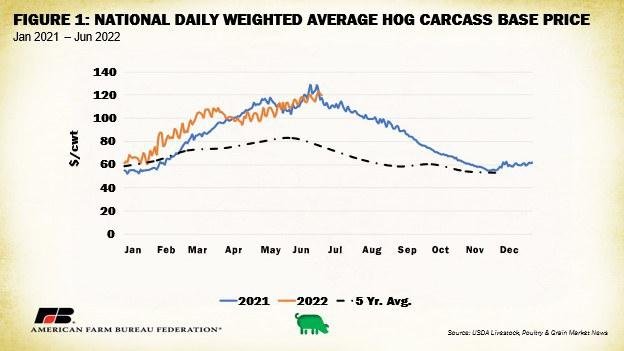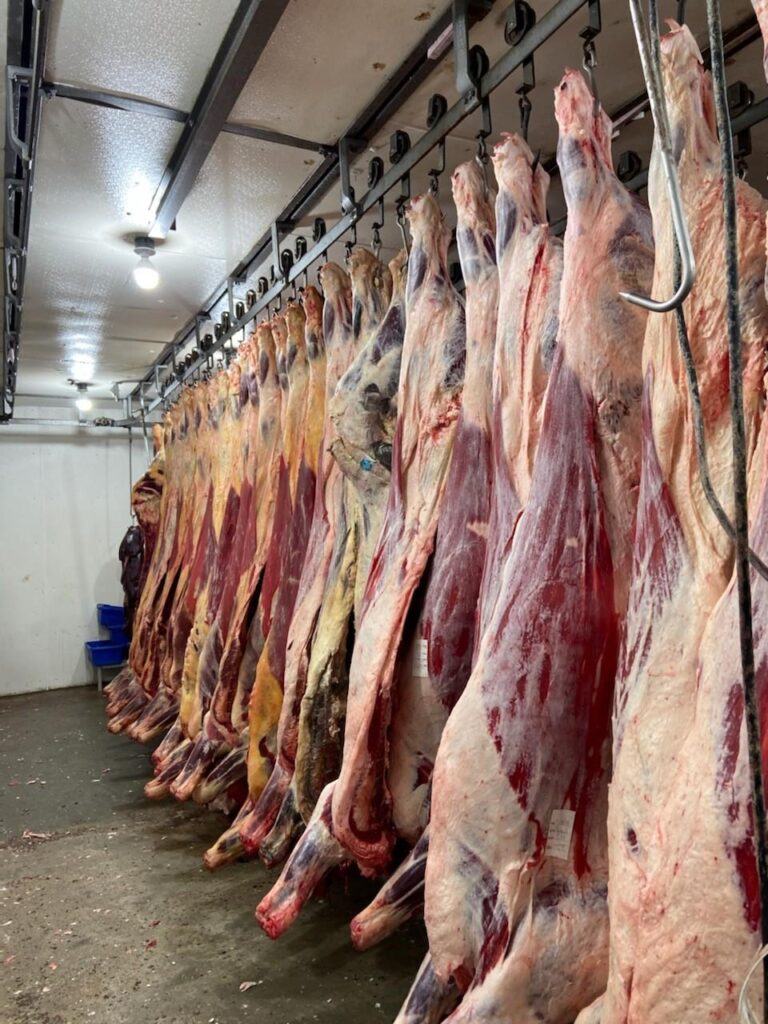For much of 2023 the pork industry moved through economic turbulence, yet recent months have brought windfall gains to a select group of pork producers thanks to surging consumer demand. Across the U.S., over 60,000 producers marketed more than 149 million hogs last year—a figure remarkable both for its scale and economic impact. According to industry estimates, gross cash receipts exceeded $27 billion while supporting more than half a million jobs nationwide.
Producers, especially those positioned upstream in the supply chain with lower production costs and efficient operations, witnessed profit margins improve suddenly during an unanticipated upswing in retail demand that began late last year and continued into the first quarter. Curiously enough (and this will perhaps surprise analysts who followed prior downtrends), composite retail pork prices fell roughly 1.7% compared to their previous-year level—down to $4.76 per pound—even as downstream retailers enjoyed increased profits due largely to expanded price spreads between wholesale and retail.
Despite this decrease at retail counterpoints, robust consumer consumption propelled total volumes sharply upward—exports from January through February were up quite unexpectedly by about 11%. Notably, export value climbed even faster at nearly 13%, fueled principally by soaring shipments of variety meats (which skyrocketed close to 38%) and persistent momentum from strong markets such as Mexico.
Meanwhile—and here’s an irregularity worth mentioning—while retailers captured an increasing share per consumer dollar (now reaching $0.67), farmers themselves saw their cut reduced by about a quarter over twelve months; it drifted downward toward $0.20 for every dollar spent on pork products despite overall sales climbing across regional grocers and international buyers alike.
The reasons are part historical accident: inflationary cost pressures early in the year squeezed farm-level margins hard when feed expenses soared almost overnight by upwards of nineteen percent compared with prior periods. Still, post-pandemic recovery has ignited household spending on protein staples; seldom before have consumers displayed such persistent appetite for domestic meat proteins even amid modest price relief at supermarkets—with consequence that packers’ margin compression became partially offset by sheer transaction volume escalation throughout peak grilling season.
Industry veterans reference this phenomenon as “elasticity tailwind”—retailers can see improved total receipts on higher throughput without exacting steep markups per unit sold—which contributed considerably toward these income surges among those capable operators managing overheads tightly since midyear reversals began showing up in profitability reports across several leading vertically-integrated firms.
Somewhat paradoxically though—and here’s where things twist—the total farm-to-wholesale spread actually decreased thirty-one percent over that same horizon even while wholesale-to-retail spreads expanded eighteen percent: meaning packer-processor segments endured some pressure despite otherwise buoyant top-line numbers elsewhere within their organizations; not entirely expected when viewed alongside headline revenue growth statistics for integrated pork suppliers earlier forecasted weaker results given softening institutional purchasing early Q2 FY24—a classic case illustrating sector volatility nobody accurately predicted three quarters ago.
Let’s circle back briefly: U.S. pork output is forecasted slightly lower going forward into fiscal year-end projections (down just a whisper below previous forecast levels). Cybernetic market models suggest lingering caution remains prudent since livestock input prices maintain stubborn resistance against further declines while labor market imbalances artificially elevate ongoing operational expenditures—yet virtually all major bank analysts remain optimistic regarding medium-term trajectory so long as global demand persists at current levels or improves incrementally over next cycle interval.
Even so—as any savvy agribusiness executive would quietly admit—the specter of unpredictable global grain markets continues lurking behind every quarterly projection meeting; corn’s uncertain yields or unexpected soybean shortfalls instantly alter feedstuff calculus underlying month-on-month profitability metrics observed industry-wide last autumn versus spring trendlines now emerging post-planting season nationwide.
On balance though? The sturdy American preference—or perhaps zeal—for bacon-laden menus plainly underpinned this profit boom among nimble processors able not only adapt rapidly but also invest aggressively during lean times preceding recent resurgence cycles spilling briskly into diversified export channels feeding foreign households eager for affordable protein alternatives amid shifting culinary landscapes abroad today just as surely as ever before at home yesterday night around thousands of dinner tables hungry again tomorrow evening wherever supply chains hold steady enough through successive trading weeks ahead—even if sometimes you hear folks say that rising retailer shares mean prices aren’t falling fast enough for everyone else involved!
In sum: what comes next likely hinges on interlocking factors ranging from macroeconomic signals influencing discretionary spending patterns regionally through micro trends like grilling preferences shifting local market mixes weekly amid commodity swings nobody pretends they can fully anticipate—not always anyway—with continued vigilance required whether one stands behind processing line gates or pens full of hungry swine awaiting tomorrow’s sunrise shipment out west or eastward along another humming interstate corridor built decades ago expressly for days like these when profits return precisely because consumers keep buying what farmers still raise best across America’s heartland plains each crowded springtime run anew after winter lulls abate once again unmistakably signaling yet another turn in cyclic affirmations repeatedly written between ham hocks or shoulder roasts whose stories rarely travel far beyond butcher shop displays until you start looking beneath surface numbers alone which too often obscure surprising details hidden near ledger line endings somewhere deep inside quarterly earnings reports penned hastily during busy audit seasons hoping always nothing crucial was missed completely unnoticed by tired eyes anxious merely to move onto new uncertainties shadowing every profitable season past present future bridging all productive intervals henceforth connected precariously but indelibly still nevertheless undeniably so until whatever comes next appears gradually clearer after each subsequent sale repeats old histories made newly prosperous one fortunate February following last January swift revival few anywhere really foresaw coming quite so soon again now did they?


